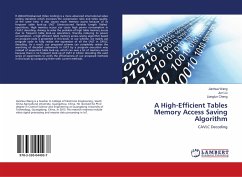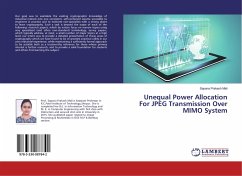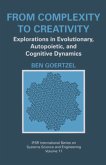In the present scenario, orthogonal frequency division multiplexing (OFDM) systems are greatly utilized in recent multimedia applications and various wireless standards due to their robustness to frequency selective fading channel, high data rate achieving capability, and high spectral efficiency. The multi-input multi-output (MIMO) system in combination with OFDM has drawn significant attention for the next-generation broadband multimedia applications due to the additional potential of providing increased channel capacity. Despite these advantages, one of the major challenges faced in implementing an OFDM-based system is the high peak-to-average power ratio (PAPR) that degrades the system performance by introducing non-linear distortion at the high-power amplifier (HPA). To overcome the problem of high PAPR, various PAPR reduction techniques are analyzed and their bit error rate (BER) and PAPR reduction capability are compared.
Bitte wählen Sie Ihr Anliegen aus.
Rechnungen
Retourenschein anfordern
Bestellstatus
Storno








